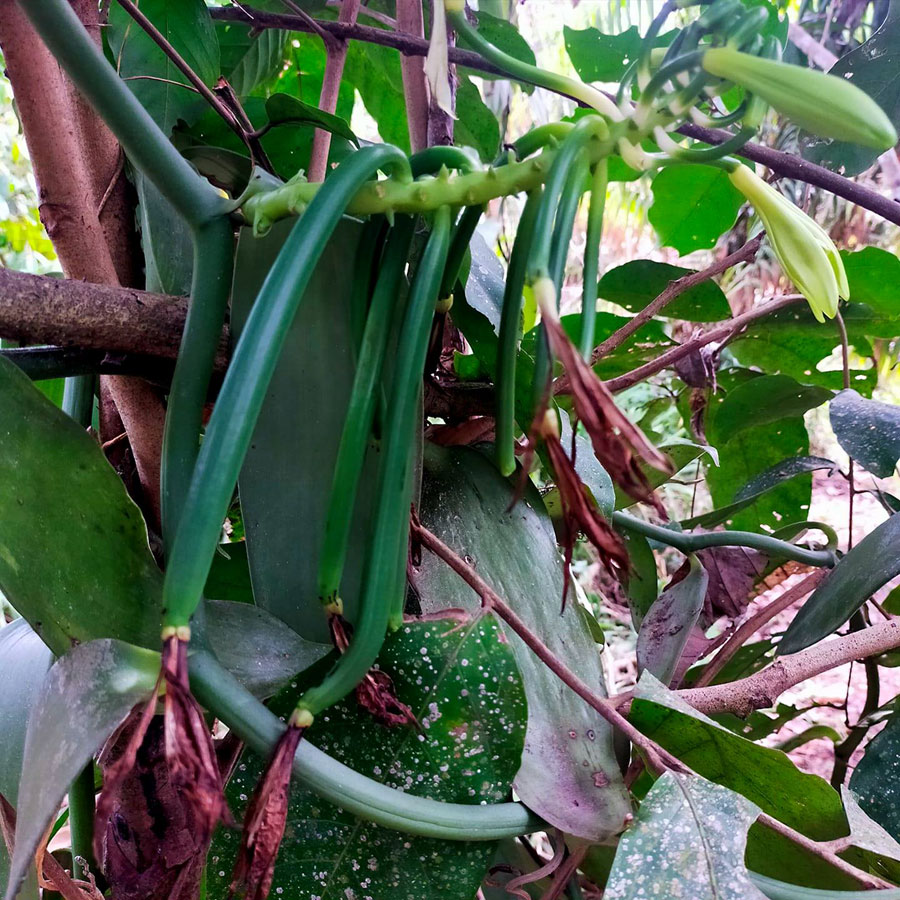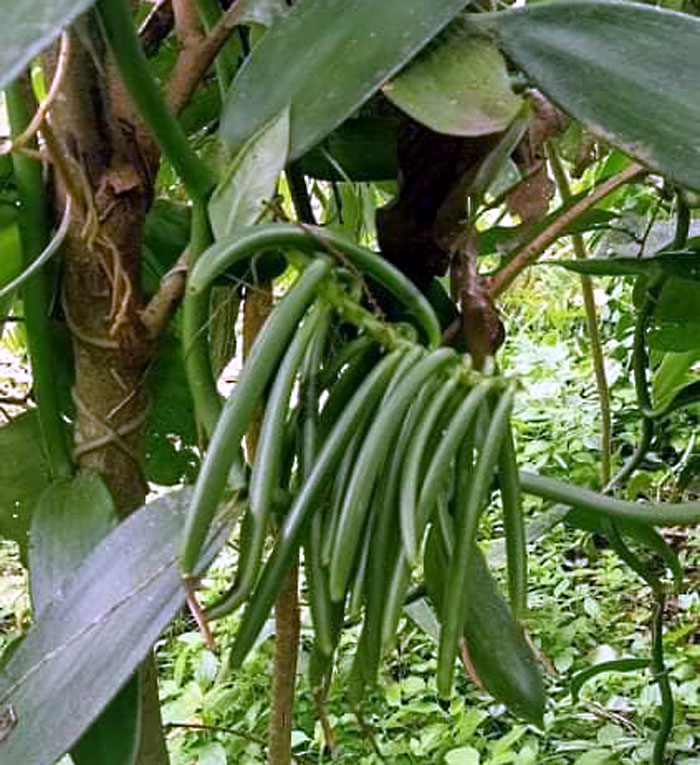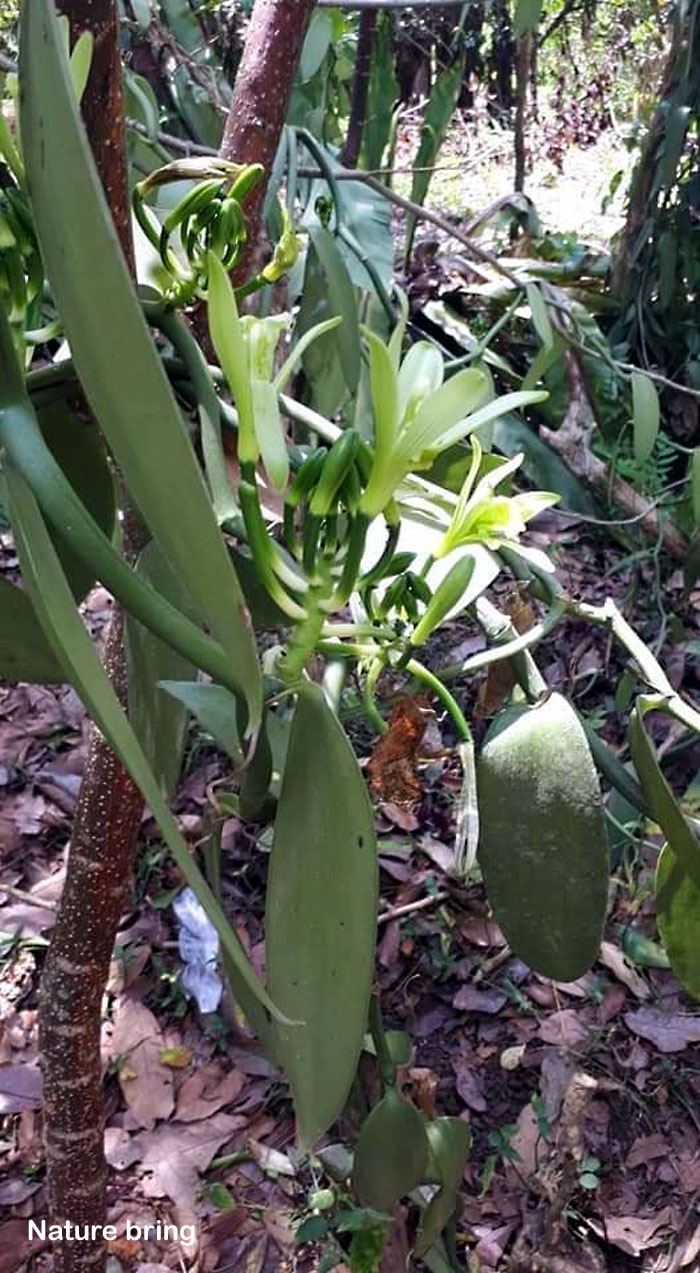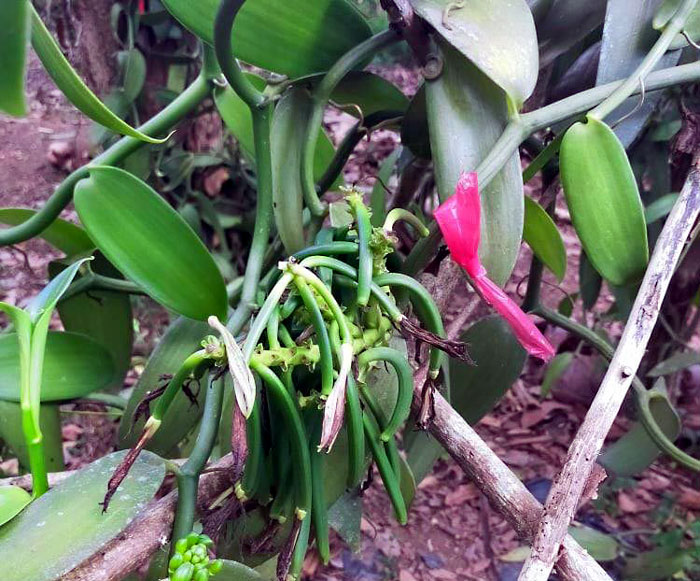Vanilla Beans plant (Vanilla orchid)
The vanilla beans of commerce are the cured unripe fruit of Mexican or Bourbon vanilla (Vanilla planifolia), Tahiti vanilla (V. tahitensis), and occasionally West Indian vanilla (V. pompona); They are all derived from the same species and are found in Mexico, Central America, and northern South America. Unlike most other plants, the vanilla plant has a long, fleshy climbing stem that attaches to trees through aerial roots. The roots also penetrate the soil. Depending on the variety, the flowers can be pale green, yellow, or creamy white. It takes approximately four to six weeks for the fruit to reach its full length of about 20 cm (8 inches), but it could take up to nine months for it to reach maturity. The beans are harvested as soon as a golden hue appears at the base of the unripe pod.
Overview of Vanilla plant
Scientific name Vanilla planifolia
Common name Vanilla Beans, Vanilla orchid, Vanilla plant
Plant type Orchid
Flower Color White, yellow and green
Blooming time December to February
Sun required Full sun to partial shade
Soil Rich, fertile soil, and moist soil
Soil pH 6.5-7.5
Zone 10-12
Growing Vanilla beans plant
The vanilla bean grows on orchids that belong to the Vanilla genus. Hawaiian, Mexican, Tahitian, Madagascar, Indonesia, and other tropical regions are frequent spots for growing these plants. Vanilla is classified as semi-epiphytic in botany, which means gardeners can plant it in the ground or grow it as an epiphyte, an air plant. Vines can grow over 200 feet long and are perennial plants. The seeds of the orchid are used to produce the vanilla extract. These pods are the “vanilla beans.
Sunlight
In the morning, the vanilla bean orchid will tolerate brief periods of sun but prefers bright shade. Your Vanilla orchids should not be exposed to direct sunlight because this can cause sunburns and damage. A great place to grow Vanilla orchids is at the southern end of a greenhouse since there they will receive indirect sunlight and can grow on the shaded branches of a tree or trellis.
Temperature and humidity
You should check the temperature and humidity of your environment to see if the conditions are suitable for growing vanilla orchids. Vanilla orchids prefer to grow in warm temperatures including daytime temperatures of 80°F to 85°F (26.7°C to 29.4°C) and nighttime temperatures of 65°F to 75°F (18.3°C to 23.9°C).
In order to grow vanilla orchids, the humidity level needs to be high, at 85 percent. Hygrometers can be used to determine humidity levels in greenhouses and planting areas. The humidity in the area must be above 85%. Reduce humidity by using a dehumidifier if humidity exceeds 85%. Maintain an 80 percent humidity level by misting your plants regularly. To avoid fungal rot, good air circulation is necessary at the same time.
Soil
A combination of fir bark and peat moss should be placed in a small pot. Soil drainage will be improved by adding fir bark and peat moss. In order for your small plant or cutting to grow, it needs an excellent drainage system and ample nutrients. The vine will no longer rely on roots in the potting mix once it develops epiphytic roots. As an alternative, you could use orchid-specific potting media. Consider growing orchids in small pots rather than planting them directly in the ground or in large pots.
Water
With vanilla bean growing medium, you should also keep the wood trellis structure moist, as vanilla plants develop air roots, these roots draw moisture from the air. If the potting medium needs to be watered, mist it every day or let it dry between waterings. Before watering the orchid again, wait until the top 2 to 3 inches (5.1 to 7.6 cm) of the potting medium has dried. Moisture should be present in the soil after watering, but it should not be soggy. A spray bottle filled with distilled water could also be used to mist the orchid each day. Spray lightly to retain moisture in the soil, stem, and leaves of the plant.
Fertilizer
The vanilla orchid should be fertilized every two weeks during spring and summer with orchid fertilizer. It is recommended to fertilize lightly but regularly. A weak fertilizer should be applied every week. This is done by diluting the fertilizer (about half of what is recommended) as instructed on the package. Use a liquid fertilizer high in nitrogen (30-10-10) when the plant is actively growing. When the orchid is not in active growth, (20-20-20) is a recommended orchid fertilizer solution. The tops of the orchid’s leaves and roots can be severely damaged if you add fertilizer when the plant is dry.
Read also:
Growing secrets for Calathea plants. Orchids growing and care tips. How to grow Long bens in your backyard. Cluster beans growing and care tips. Mangosteen trees growing guide. How to grow dill plants. When and how to grow Wisteria plants. Yucca plants growing and care tips. 10 East DIY garden trellis ideas. How to grow Organic Cucumber. Monstera delicata growing at home. 8 ways to bring nature indoors. Plumbago auriculata growing and care. Grapefruit tree growing information,
For pin:




